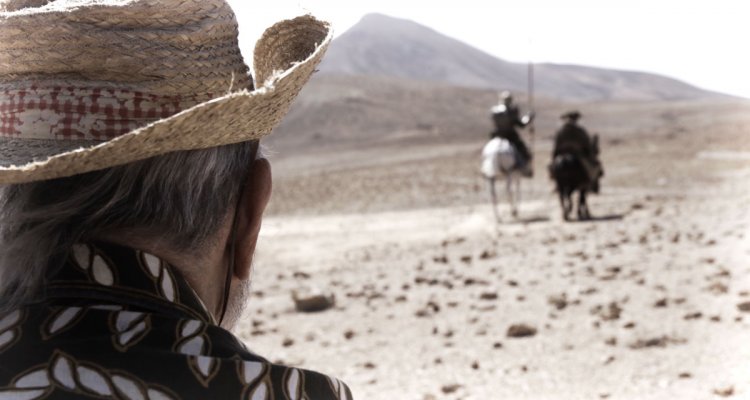A study of legacy, ambition, self-doubt, and determination, “He Dreams of Giants” is a fitting conclusion to one of the most laborious artistic endeavors in recent history. A sequel of sorts, directors Keith Fulton and Louis Pepe have returned to tie a bow on a most unusual cinematic journey, one where the story, the story about it, and the story about that all become tangled up in a paradoxical cinematic prism. And while their first film was very much about a perfect storm of calamities descending on a film shoot disintegrating in real-time, their newest documentary is more concerned with the man behind it all: Terry Gilliam.
“He Dreams of Giants” picks up roughly 15 years after “Lost in La Mancha” left off. The latter documentary detailed the infamous and short-lived production of “The Man Who Killed Don Quixote” when that film’s director, Gilliam, folded the effort after just a handful of days of shooting. Put in turnaround for over a decade, the picture became one of the most famous canceled productions in Hollywood history (due largely to Fulton and Pepe’s superb documentary about its collapse), and continued to plague Gilliam in interviews and press junkets as some kind of legacy-entwined white whale.
“Lost in La Mancha” was rightfully praised for its honest look at a side of filmmaking that few people outside of the industry even comprehend. Movies shut down all the time at various stages of production, even in mid-shoot, and work amounting to thousands of hours are lost when location scouting, costuming, set design, and numerous other aspects of a film production add up to nothing. “He Dreams of Giants” wades back into this thematic pool, with everyone featured in 2017 shown to be well-aware that this production restart could amount to yet another misfire: Gilliam chief among them.
When Fulton and Pepe catch up with Gilliam as work on “The Man Who Killed Don Quixote” resumes, it’s clear that intangibles like flash floods and rogue military jets aren’t the wild cards this time, but rather Gilliam himself. Like a golfer with the yips, a quarterback with happy feet, or a baseball player that just isn’t seeing the ball anymore, Gilliam has retreated deep inside of his own head. His recent stroke, a string of professional failures, and the looming specter of this “cursed” project have obviously rattled the director, and he can’t seem to help getting in his own way.
As filming on “The Man Who Killed Don Quixote” proceeds, small hiccups do indeed arise, but they pale in comparison to the tempest raging inside of Gilliam on- and off-set. It’s a fascinating thing to behold, and speaks to the universal feeling of doubt that infects every person at one point or another, even successful, Oscar-nominated writer/directors. At one point, Gilliam reflects on the parallels between his life and the story of Don Quixote, both old men who refuse to face the painful burdens of reality, choosing instead to immerse themselves in a fantasy and ride off for one last grand adventure. It’s a fascinating moment in the documentary and gives the audience a peek into Gilliam’s mind, showing how this unique level of self-awareness both hinders him and drives him forward.
It’s not all second-guessing, shadow-dodging, and despair, though; “He Dreams of Giants” shows Gilliam to be the benefactor of some damn good luck this time around, including a top-notch cast featuring Adam Driver and Jonathan Pryce. Handmade costumes from the first, failed production are also rediscovered and work out splendidly, saving the new shoot considerable money, and at one point Gilliam even finds himself one day ahead of his shooting schedule. Yet despite it all, Gilliam is consistently waylaid by anxiety and despair, leaving many involved to wonder aloud if the film will ever be finished: even after a complete shoot.
Fulton and Pepe do a magnificent job tying up the loose threads from their first documentary about Gilliam’s passion project, showing how natural disasters can calcify in one’s mind over time to evolve into personal ones. More than just the second part of a video diary that spans 15+ years of a troubled movie shoot, “He Dreams of Giants” speaks to the way art haunts the artist, and can serve as both a liberating and imprisoning force. A fitting conclusion to one of the most famous stories about a story, the documentary might have benefitted from just a bit more time following the premiere of “The Man Who Killed Don Quixote” to give its audience a sense of how Gilliam and those involved experienced the fruits of their labor. Still, as a companion piece to “Lost in La Mancha” it works as well as one could reasonably hope, a rare feat for anything connected to Gilliam’s cinematic white whale. [B+]

